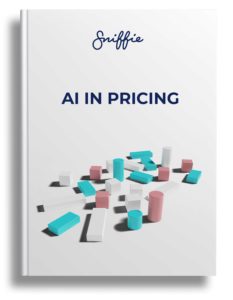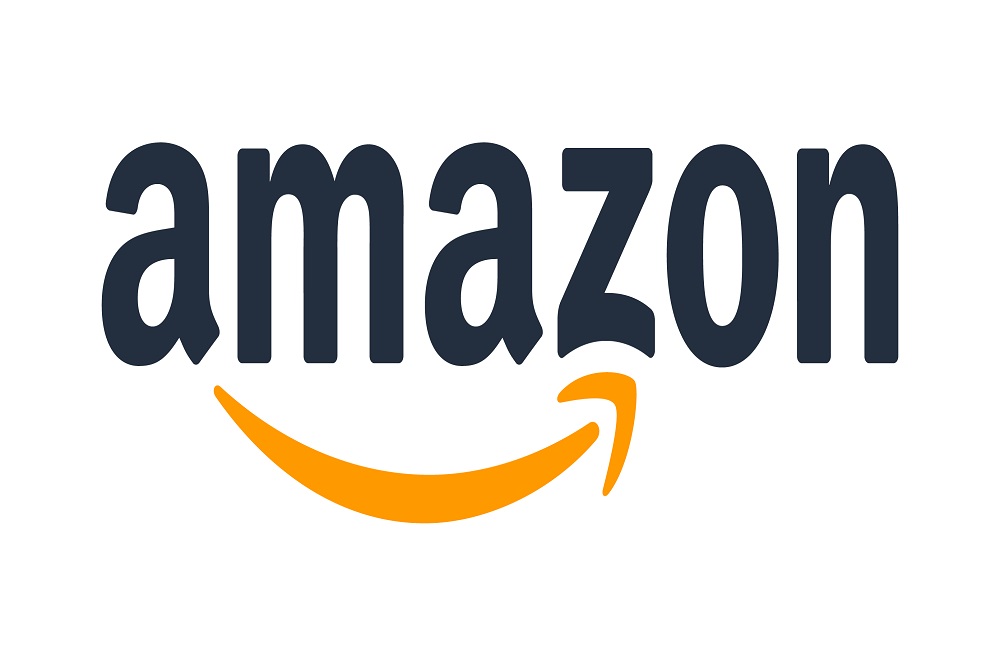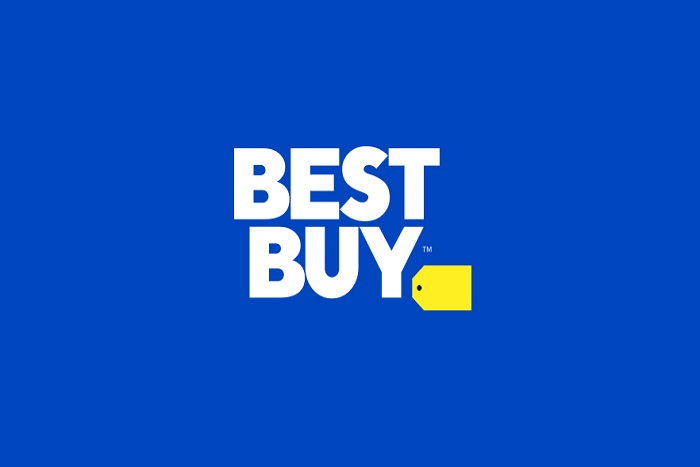Introduction to pricing strategies?
Pricing strategies can be defined in a very simplistic way to a set approaches used by businesses to set prices for their products or services to achieve specific goals, such profit maximization.
Profitable pricing is crucial for any business. In Ecommerce it is especially important as price is the number one reason to choose the place to buy for consumers shopping online. Pricing too high will most likely lower your sales volumes. Price your products too low and you will be leaving money on the table. To decide how to market and price your products, you need a pricing strategy. Naturally, there are a lot of different pricing strategies. We have explained the main ones, which can be used as a guide for pricing your products.
Pricing strategy simplified
Pricing strategy is a plan to price your products in a systematic way to maximize profits and your marketing message.
As you can easily understand from our pricing strategy definition, price is just one component of a pricing strategy. Pricing strategy is always a part of your marketing strategy. Let me explain. You want to be a cost-leader in the industry. Your marketing strategy is to pinpoint things that actually make people believe you are the cheapest on the market. In addition to keeping the products that people compare low-priced, it includes a clear message, design and graphics that support the image of being cost-effective and affordable. This way people’s expectations on the affordable price level is met. Think of IKEA for example. They design the price first and then their supply chain will make sure the cost-effectiveness is carried (literally by you) out of the store. It doesn’t have to look cheap, it just has to feel that way.
From early on it is good to remember that pricing strategies are affected not only by the price alone but also by both internal factors (brand, product features, customer groups, revenue targets) and external factors (competitors’ product features, competitors’ pricing, demand on the market, economic factors). We will get back to these factors later on.
Common pricing strategies used in ecommerce
Based on the legendary Porter’s generic strategies, you only really have three options when developing a strategy for your company. Pricing strategy included. The three main strategies are:
Cost leadership
Cost leadership, a strategy where your company is focusing on generating value through low costs that enable low prices.
Differentiation strategy
Differentiation strategy is based on creating products that generate value to their customers which make them ready to pay a premium on the value they receive. You could easily talk about brand value in these cases.
Focus strategy
Focus strategy aims to find a niche mark where there is a need and where your company has an unbeatable competitive advantage over your competitors, often either through knowledge or clever understanding over technology. It is often used also in fragmented industries to serve smaller parts of the segments with a clear and simple strategy.
Now that we have a basic understanding of what a generic strategy is we can go further to understand how different generic strategies use pricing. Let’s first explore some of the most common pricing strategies used in ecommerce.
Simplified pricing strategy examples for Ecommerce
Let’s take a quick look at some examples of commonly used pricing strategies in ecommerce. Think of the following list as a mini dictionary of the pricing strategies covered in this article:
Market-based pricing strategy
In a market-based pricing strategy your products are priced based on their price position on a given market.
Cost leadership as a pricing strategy
Cost leadership pricing strategy is a strategy where your company is focusing on generating value through low costs that enable low prices.
Premium pricing strategy
The premium pricing strategy is used by companies that use differentiation as their generic pricing strategy. Their product pricing is often higher to pinpoint high value in their high-end products. Premium priced products are often unique, they are differentiated with a clever marketing strategy and have a strong brand image with lots of innovative features.
Cost-based pricing strategy
The cost-based pricing strategy, also known as “cost-plus pricing”, “markup pricing” and “break even pricing” is based on adding a fixed cost to the cost of producing a product.
Price Matching as a pricing strategy
Price Matching is a strategy where your pricing is matched to your competitors’ pricing. This often also includes an offline opportunity to prove your possibility for a lower price. The price match is often used by retailers, yet it is a controversial strategy where consumers in the end might be losing as competitors are unwilling to lower prices.
Many of the above strategies will naturally be accompanied with some variations. For example, in the cost leadership position a company might use ABC-analyses to understand which of the products need to be close to market minimum and which can be priced higher, with a premium price.
Each of the above strategies are described in more detail on a landing page made for them. To give you a better idea of the use of these strategies in practice, let’s move on to going through some real life examples of pricing strategies.
Ecommerce pricing strategies with company case examples
You look at Rolex, the average price tag they have on their watches varies from $7,000 to $12,000. Why is Rolex able to price their watches with high price tags when Daniel Wellington offers watches at $100? Sure, Rolex watches are of great quality. Sure, they look good as well. But the real answer is that the Rolex brand is a premium brand. A well-established and known by people, Rolex is able to use premium pricing to price their products.
Have you ever shopped at Amazon and wondered how some of the offerings are so moderately priced? Amazon offers an excellent example of an ecommerce company that practices cost leadership strategy. What enables Amazon to use cost leadership and gain competitive advantage by using it? The company has mastered the art of logistics from warehousing to transportation not to mention the use of automated processes from packaging to office work. With the above factors combined, Amazon is able to cut down costs while being very effective operationally.
Looking for a new car, let’s say an Audi or a BMW. Make a simple Google search online and you quickly realize that both the competing companies are relatively close in price and in features. Why? Because both of the above-mentioned companies are using market-based pricing and price their products based on the products’ position on a given market.

Large and recognized companies such as Best Buy use price matching policies to beat their competition and get more customers.
Best Buy’s Price Match Guarantee states that the company will not be beaten by price as they will “Match the product prices of key online and local competitors for immediately available new products (excludes clearance, refurbished and open-box items).” However, Best Buy does not offer the price match for every product but only for products that are of the same brand, model number and color to that they sell.
An American clothing retailer Everlane is being very open about their use of cost-based pricing. On their website they give concrete examples of how their products are priced. For a “Modern loafer” the company pays $18,25 for materials, $29,16 for labor, $1,47 for transport, and $4,75 for duties which totals in $54. So the total cost for Everlane for producing a single “Modern loafer” is $54 and the company has set a retail price of $168 for the product.
Why machine learning and AI are the future of product pricing?
AI is a buzzword like no other. We sat down, wrote all we know about it and let you be the judge. Here is a seriously indepth 50-page insights on how to use artificial intelligence in pricing. Hope you find it useful!

Ecommerce hybrid model pricing strategy
Even though we have gone through a strategy at a time and looked at each strategy individually in this article, it does not mean that your business should stick to a single pricing strategy. Earlier in this article we mentioned that there is no “one-size-fits-all” model in pricing strategies and indeed when building the best working pricing strategy for your business it is possible to mix the components of different pricing strategies together.
A pricing strategy that a competitor of yours is using might not be a perfect fit for you but a part of their pricing strategy combined with another pricing strategy might be just what your business needs. The important part is that you thoroughly know your product/service, the demand for it, your customers, your competitors, your costs, and lastly, the market that you operate in. The above factors are core things in determining a suitable pricing strategy for your business.
What is the best pricing strategy for ecommerce today
There are now more customers available for ecommerce companies than ever before. During the COVID-19 pandemic sales in ecommerce exploded. According to Shopify, 10 years worth of ecommerce growth happened in three months when the pandemic peaked in the US.. Moreover, 150 million people used online shopping for the first time during the pandemic and from the 11 markets that Shopify surveyed, 84% of the consumers in those markets did their shopping online.
Competition between ecommerce businesses is also now more fierce than ever. As there are more people looking for products online and more companies offering products for them, pricing has become more important than ever. This naturally makes it important for businesses to develop and deploy pricing strategies that are the best fit for them.
So what is the best ecommerce pricing strategy in today’s world?
Truth to be told, there is no single best pricing strategy that would be fitting for every business but there is a fitting pricing strategy for every business. Finding out what the best pricing strategy for a specific ecommerce company is requires companies to explore different options to find the strategy that is the best fit for them. Utilizing AI-based price optimization, Pricing automation, or Market price monitoring tools can give your pricing strategy a competitive edge.
How to see pricing as part of your ecommerce marketing strategy
The image of having a separate marketing strategy and pricing strategy is common. As we have already discussed in this article, this should not be the case. Instead, a pricing strategy should be an integrated part of an overall marketing strategy, and this applies to any ecommerce business.
We already know that by developing and executing a pricing strategy we can find the most optimal price point for our products/services and earn the most profit. A marketing strategy is surely also known to us all, to recap it is the action plan that we use to connect with our potential consumers and eventually turn them into customers. In today’s ecommerce price is one of the biggest factors that consumers think about when deciding whether to purchase something or not. To increase sales, consumers must see and hear about your products and prices and also consider your prices to be fitting for the product/service you are offering. Now, it really must seem like a no-brainer to tie these two strategies together to achieve the goals mentioned above.
When you develop a pricing strategy, you probably think about your product, the market situation, competition and demand, which all should be acknowledged in your strategy. To take this a little bit further, think about the 4Ps of marketing (Product, Price, Place & Promotion). All of the concepts within the 4Ps are just as important to take into consideration when drawing up a pricing strategy as when developing a marketing strategy. By looking at the internal and external factors from both marketing and pricing point of view you can develop a comprehensive strategy that includes the factors known to increase profits and revenue.
As the competition in ecommerce is now more fierce than ever before, it’s even more crucial for modern ecommerce companies to have their pricing strategy as an integrated part of their marketing strategy. Why? The answer is simple; to stand out from the competition.
How to carry out your pricing strategy
After you have made up your mind on using a specific pricing strategy, you have completed phase one. Drawing up a pricing strategy is one thing, setting the strategy into action is a whole other ball game. Next we are going to go through the steps that you should take when carrying out your pricing strategy in your organization.
Research for pricing strategy
Do your research before you rush in and end up executing a wrong strategy. Identify your market, goals, product, business, costs, customers, and competitors. Then, based on your findings, pick the most fitting pricing strategy and start the process of taking it into action.
Choose the right person to run the project
As said before, carrying out your pricing strategy may not be a walk in the park. The process is a lot harder than developing a pricing strategy. An experienced professional should spearhead the project so nothing is left unnoticed and even the smallest detail is taken into consideration. Ideally the project should be led by someone that has already dealt with implementing a pricing strategy in the past.
Make everyone in your organization understand and value the strategy
Launching a pricing strategy is a team effort. Every employee of your organization no matter the function they work in, should be well aware of the pricing strategy that you have chosen to deploy, understand the reasons behind it and acknowledge the importance of a functioning pricing strategy. Prepare your management to be able to educate other members of your company about the pricing strategy and to pinpoint the objectives that are aimed to be achieved with the use of the strategy.
Communicate and make sure everyone knows what they are supposed to do
The process of carrying out a pricing strategy cannot succeed if tasks related to it are done in silos. To ensure that a pricing strategy and pricing decisions are being carried out properly there should be a continuous information flow and no doubts about who is responsible for each part of the process. It is not too uncommon for companies to divide certain tasks related to a specific area of business between different functions (e.g. product team focuses on developing a product and finance team focuses on the pricing of the product but the teams don’t really know what the other team is actually doing.) To successfully execute a pricing strategy every team taking part in the process should be on the same page about the strategy. Take sales & marketing for example – If they are not informed, how are they supposed to sell the pricing strategy to customers?
Once you get going, don’t just set and forget, instead analyze and reoptimize
When carrying out a pricing strategy, its performance should be monitored continuously. Profitability, to be exact. How do you do that? Before launching the strategy be sure to develop pricing metrics for the strategy. Follow the metrics from the beginning to keep track of how the strategy is performing. A simple spreadsheet is enough to mark down and analyze the metrics. The more data you have, the easier it is to reshape the strategy if needed. Remember to analyze the data critically and then make adjustments.
Proceed slowly but surely
No change happens overnight and when setting a pricing strategy into action, it may take more than only refining your pricing processes. Take small steps instead of leaps, analyze results, and reoptimize. By adopting this mentality early on, it will benefit you in the long run when and if you have to make changes to your pricing strategy.
Following these steps will get you started with setting your pricing strategy into action. Remember that careful planning and preparation is the key to successfully carrying out your pricing strategy.
What are the tools you need for your pricing strategy
Knowledge is power and when you are creating a pricing strategy, knowledge is a real power tool. The way a business prices their products/services should be based on the idea that price is constantly living and moving instead of being a static object. With this in mind, the factors listed down below should be looked at from the same point of view as they also can change over time.
To keep it simple, let’s focus on the practical things that you must keep in mind when developing a pricing strategy:
Your brand
How do people see your company and brand? When they see your logo, do they think high-end high priced products or the opposite? Do they recognize your name instantly or is your brand completely unknown to them? People tend to pay more for products that they recognize as high quality and in contrast they can relate low price to low quality.
Customers
Who is your ideal customer to begin with, where are they located, how much are they expected to pay for your products and how are they expected to react to an increase or decrease of a price? By getting to know your customers it is a lot easier for you to define the fitting pricing strategy for your business.
Competitors
There are three main things that you should think of when thinkin about your competitors. 1. What is it that they are selling? 2. What price tags do they have on their products? 3. What is the difference between their products and your products? Knowing what your competitors are selling, how much they are charging and what the differences between their product and your product are will allow you to price your products better.
Costs
It is simply impossible to develop a pricing strategy, not to mention set a price for a product without knowing how much you are spending to produce, store, market, and sell that product. Remember to think about the complete cost structure of your business when developing a pricing strategy.
Additional tools for enchancing your pricing strategy
Price optimization, pricing automation and price monitoring are all concepts that you can deploy to improve your existing pricing strategies and to develop more informed and better pricing strategies.
Price optimization
Our price optimization is based on artificial intelligence and machine learning. The system studies prices over time and understands the demand for each individual product, finally settling for the most profitable price point. To put it simply, our tool tries out different prices for your products and eventually finds the optimal prices that will earn you the most profit.
Pricing automation
Our pricing automation tool allows you to set pricing strategies, change prices easily and plan & execute campaigns. The tool also makes it easy for you to compare your pricing strategy to competitors’ pricing strategies.
Price monitoring
With price monitoring you can make more informed decisions that are based on real data regarding your pricing strategies. Price monitoring allows you to monitor the pricing situation on a given market, your competitors’ price changes, campaigns and their stock levels.





